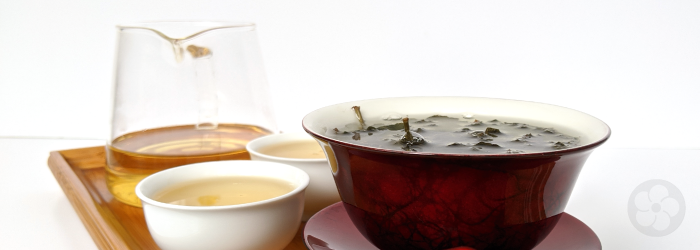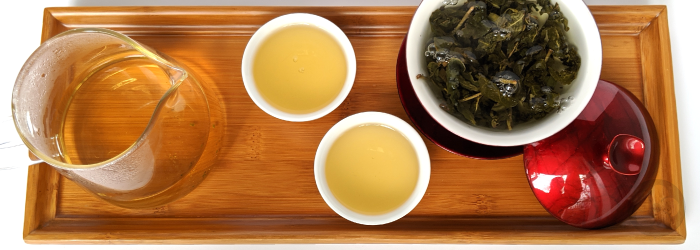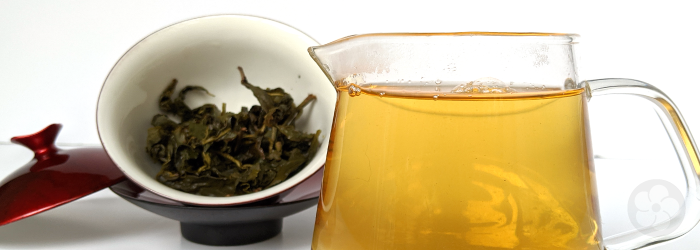8 Tips for Brewing Multiple Infusions

For those new to the world of whole leaf, natural teas, the concept of re-steeping a single serving of tea leaves is often surprising. Unlike the powdered leaf pieces found in most tea bags, or even the finely ground beans use to make coffee, whole tea leaves offer less exposed surface area. The result is a slow unfurling of flavor, rather than immediate extraction, and the potential for several cups of flavorful tea from a single scoop of whole leaves.
Learn more about how leaf size affects quality >>
Given this potential for long-lasting flavor, how do we make the most of each leaf? How many times can you steep a tea, exactly? What is the advantage of doing several brews instead of only one? How should leaves be stored between infusions? We’ve got eight tips (and the answers to all of these questions) to help you get comfortable with brewing multiple infusions.
Watch Alice explain the basics of re-steeping tea leaves in this video:
1. Use Pure Teas
Natural flavors inherent to the Camellia sinensis tea leaf will work best through multiple infusions. Herbal teas that contain dried fruits, flowers, or spices typically release flavor more quickly than true tea leaves. Artificial flavors added after the basic crafting steps lie on the surface of the leaf, and will therefore be extracted quickly. Since these flavorings are typically added to low-grade teas with mediocre natural flavor, later infusions that allow hot water to penetrate past the surface will reveal any underlying shortcomings.
Learn more about how flavors are added to tea >>
In contrast, natural flavors that develop through the process of slow growth and careful crafting will develop fuller, more complex notes as water permeates the inner layers of whole leaves. Pure teas often reveal their best, most interesting nuances on the second, third, or fourth infusion, as the leaves begin to open fully and release more of their inherent flavor.
2. Choose High Quality Leaves
Similarly, high quality leaves that have grown slowly in nutrient dense soil contain more flavor complexity in general, and typically deliver better quality flavor over a greater number of infusions. While a quick-growing tea grown in a hot, humid climate and chopped into small pieces during crafting can deliver a bold flavor to a large mug quickly and efficiently, it will not maintain the same flavor quality for several infusions.
Find out what makes a tea ‘high quality’ >>
On the other hand, natural flavor complexity that develops within the plant during slow growth and careful crafting will change and develop over the course of multiple infusions. As mentioned before, high quality, natural tea leaves will deliver even greater intensity in later infusions. This effect is easy to observe in teas from Taiwan, where increasing viscosity, flavor complexity, and potential number of infusions can be easily observed in teas from higher elevations.

3. Use a Smaller Brewing Vessel
One way to increase the number of infusions from any tea is to increase the ratio of tea leaves to water. When a small serving of leaves is steeped in a large mug of water, the flavor is more dilute, and more flavor must be extracted from the leaves to create a satisfying cup. In a smaller vessel, the same small serving of leaves will yield a greater number of infusions, but a more concentrated flavor.
Learn why Chinese teapots are so small >>
Our personal preference varies slightly from tea to tea, but as a general rule, we recommend one gram of dry to each ounce of water. This is far more concentrated than the typical western recommendation to steep two grams of bagged tea in a 12-16 ounce mug, but not nearly as extreme as the usual Chinese practice of using 10 or more grams of tea in four or less ounces of water. We find this 1:1 ratio to be a good starting point for full-bodied flavor with rich nuance.
Watch Alice compare three different leaf-to-water ratios in this video:
4. Steep for Shorter Times
To better control the slow release of flavor, shorter infusion times are helpful. Volatile aromatic compounds provide much of the flavor complexity of natural teas, and are among the first to be released when a dry leaf is submerged into hot water. Compounds that taste bitter, like polyphenols and methylxanthines (such as caffeine), are among the slowest to infuse into any cup.
Learn more about what makes tea bitter, and how to avoid it >>
Practically, this means that a shorter steep will extract flavor without bitterness. This is especially true with whole leaves, from which flavor is extracted more slowly overall. With more leaves and less water, the effect is even more pronounced. Steeping several short infusions in a small vessel, rather than one long infusion in a large mug, will deliver more complexity and nuance, less bitterness, and offer greater control over the flavor in each cup.

5. Taste Each Infusion to Test Quality
With more concentrated flavor and more control over the outcome of the brew, multiple infusions present a great opportunity to test the quality of new teas. As previously mentioned, high quality leaves with natural flavors will increase in complexity over the first few infusions, and will usually maintain flavor through more infusions overall. When we source teas, we always make a point to taste several infusions in a row and observe how the flavor changes over the course of each brew.
Find our step-by-step guide for brewing to test tea quality >>
This method of tasting teas can help clarify the difference between many different grades of tea. To experiment, try comparing an artificially flavored or blended tea with a naturally scented jasmine. Pit a whole leaf tea against one with chopped leaves, or a summer harvest against early spring. Differences in quality that can seem minor or unimportant in a big mug often become obvious when tested over multiple infusions.
Alice explains how to taste tea for the most thorough flavor appreciation in this video:
6. Stack Infusions to Brew Large Quantities
Even after we’ve verified the quality of a tea, we usually prefer to brew more concentrated infusions to make each cup as delicious as possible. To avoid over-brewing leaves in a large travel thermos, we like to combine several infusions from a smaller vessel. This lets us maintain control over the brew to extract flavor without bitterness, while also keeping our tea habit efficient on busy mornings.
Learn why we love using a gaiwan to brew our tea >>
Since we use a relatively high leaf-to-water ratio and short steeping times, we can usually make several infusions in the same amount of time recommended to brew one tea bag. This also helps us use each serving of leaves to its maximum potential without requiring long stretches of downtime in between infusions.

7. Keep Infusions Within a Single Day
Many tea drinkers new to multiple infusions ask how to store leaves between brews. We simply leave them in the brewing vessel with the lid on. Instead of focusing on storage methods, we keep the time between infusions to a minimum. As a general rule, leaves that dry out between infusions typically lose flavor intensity. This is another good reason for brewing multiple infusions in a smaller vessel - even as self proclaimed tea lovers, we would find it difficult to consume several infusions if each were 16 ounces or more.
Find three reasons to try brewing traditional gong fu cha >>
Often, the Chinese tradition of brewing multiple infusions is put into practice when brewing for a group. With each brew divided into three or more small cups, the constant flow of tea lends context to social gatherings. While multiple infusions are also performed in solo drinking, it is more commonly in the form of ‘grandpa style’ brewing, where leaves float loose in a drinking cup, and more water is added to top off and dilute a brew that is getting too strong before all the liquid has been drained from the leaves.
Alice demonstrates how to brew gong fu cha tea in this video:
8. Finish With a Cold Brew
If your leaves are still going strong after your last cup of tea for the day, transfer them to a tall glass of cold water and leave them in the fridge overnight to make iced tea. The long, cold infusion will draw out every last bit of flavor, without extracting bitter or astringent compounds. This is the best way to make sure you’re getting the most from every tea leaf.
Get an overview of all the ways to brew tea in our comprehensive guide >>
Ultimately, the concept of multiple infusions is fairly simple: just keep adding water to the same tea leaves until they run out of flavor. We hope that the tips we’ve offered here can help you enjoy each serving of leaves a little more!
Sign up for our newsletter to get blog updates in your inbox!




Comments on this post (0)